Introduction
Introduced at the beginning of 2008, the Sigma 150-500mm f5-6.3 APO DG OS HSM (Nikon – Canon) is one of the older models in the maker’s range but it’s a promising model for wildlife and sports where portability and price are a concern. At $1069 it undercuts the slightly less ambitious 80/100-400mm models from Canon and Nikon (or Sony) without scrimping on features. As well as the extra versatility afforded by the longer focal lengths, the Sigma has four-stop image stabilization and a sonic-type AF motor.
At the time of its launch the faster auto-focus was a significant benefit over the current Nikon offering at the time, the AF VR Zoom-Nikkor 80-400mm f4.5-5.6D.
The optical construction consists of 21 elements arranged in 15 groups and includes three low-dispersion glass elements for reducing the effects of chromatic aberration. As a lens intended principally for wildlife photographers it has a very useful minimum focus distance of 86.6” (2.2m) at all focal lengths and a maximum magnification of 1:5.2. With an 86mm filter thread and measuring 9.9 x 3.6” (252 x 94.7mm) it’s still relatively compact but at 62.8 oz (1,780g) it’s quite a weight.
Please note that we’ve yet to complete our assessment of the promising new SP 150-600mm f5-6.3 Di VC USD from Tamron, which was unveiled in November last year at $1,999 (though already available at around $999). However, our review will be posted soon.
As the Sigma is a relatively affordable entry-level model we’ve chosen to assess the lens on the Nikon D610, rather than the D800.
Besides, the difference in peak sharpness between the two is slight (around 1P-Mpix), and the lens is already somewhat limited in sharpness. We’re also aware that this lens would more likely be paired with the APS-C format D7100 or maybe even the Nikon D300s, but neither of those models match the larger imaging circle of the lens or the potential of the Nikon D610 when assessing sharpness.
Best performing telephoto zooms on then Nikon D610
 |
 |
 |
 |
| Sigma 120-300mm F2.8 DG OS HSM S Nikon | 3599 | 29 | 19 |
| Sigma APO 120-300mm F2.8 EX DG OS HSM Nikon | 2449 | 26 | 19 |
| Nikon AF-S NIKKOR 200-400mm f/4G ED VR II | 6999 | 24 | 17 |
| Nikon AF-S NIKKOR 80-400mm f/4.5-5.6G ED VR | 2700 | 21 | 15 |
| Nikon AF-S VR Zoom-Nikkor 70-300mm f/4.5-5.6G IF-ED | 669 | 20 | 12 |
| Nikon AF Zoom-Nikkor 70-300mm f/4-5.6D ED | 196 | 20 | 11 |
| Sigma 50-500mm F4.5-6.3 APO DG OS HSM Nikon | 1659 | 19 | 13 |
| Sigma 70-300mm F4-5.6 APO-M DG Macro Nikon | 209 | 19 | 12 |
| Sigma 120-400mm F4.5-5.6 DG APO OS HSM Nikon | 999 | 19 | 12 |
| Sigma 70-300mm F4-5.6 APO Macro Super II Nikon | 199 | 19 | 12 |
| Sigma 70-300mm F4-5.6 DG OS Nikon | 359 | 19 | 11 |
| Tamron SP 70-300 F/4-5.6 Di VC USD Nikon | 449 | 19 | 10 |
| Nikon AF VR Zoom-Nikkor 80-400mm f/4.5-5.6D ED | 1665 | 18 | 10 |
| Nikon AF-S Nikkor 28-300mm f/3.5-5.6G ED VR | 1050 | 17 | 10 |
| Sigma 150-500mm F5-6.3 APO DG OS HSM Nikon | 1069 | 16 | 10 |
| Tamron AF 28-300mm F/3.5-6.3 XR Di VC LD Aspherical [IF] Macro Nikon | 600 | 16 | 9 |
With the same reasoning behind the Nikon mount version, we’ve chosen to assess the image quality of the Canon mount model using the 22-Mpix Canon EOS 6D.
Similarly, we’ve chosen not to look in detail at the APS-C format EOS models, such as the Rebel T5i or EOS 70D, in truth the Sigma just doesn’t perform that well at the longer focal lengths.
Best performing telephoto zooms on the Canon EOS 6D
 |
 |
 |
 |
| Sigma 120-300mm F2.8 DG OS HSM S Canon | 3599 | 28 | 18 |
| Canon EF 200-400mm f/4L IS USM Extender 1.4x | 11800 | 24 | 18 |
| Canon EF 70-300mm f/4-5.6L IS USM | 1599 | 20 | 14 |
| Tamron SP 70-300mm F/4-5.6 Di VC USD Canon | 449 | 18 | 11 |
| Canon EF 200-400mm f/4L IS USM Extender 1.4x ON | 11800 | 17 | 13 |
| Sigma 50-500mm F4.5-6.3 APO DG OS HSM Canon | 1659 | 17 | 13 |
| Sigma 120-400mm F4.5-5.6 DG APO OS HSM Canon | 999 | 17 | 12 |
| Sigma 70-300mm F4-5.6 APO-M DG Macro Canon | 209 | 17 | 11 |
| Canon EF 75-300mm f/4-5.6 III USM | 195 | 17 | 11 |
| Canon EF 28-300mm f/3.5-5.6L IS USM | 2570 | 16 | 12 |
| Sigma 150-500mm F5-6.3 APO DG OS HSM Canon | 1069 | 16 | 12 |
| Sigma 70-300mm F4-5.6 DG OS Canon | 359 | 16 | 10 |
| Tamron AF 70-300 F/4-5.6 LD Macro Canon | 125 | 16 | 9 |
| Sigma 50-500mm F4-6.3 APO EX DG HSM Canon | 1389 | 14 | 10 |
| Tamron AF 28-300mm F/3.5-6.3 XR Di VC LD Aspherical [IF] Macro Canon | 600 | 14 | 9 |
| Canon EF 75-300mm f/4-5.6 IS USM | 420 | 14 | 9 |
| Canon EF 70-300mm f/4.5-5.6 DO IS USM | 1330 | 14 | 9 |
The 150-500mm performs quite well, with distortion, vignetting and chromatic aberration all well controlled, but the recently redesigned $2,700 AF-S Nikkor 80-400mm f4.5-5.6G ED VR clearly outperforms the Sigma in sharpness. Not only is it faster (around a +1/3 stop at 400mm) peak sharpness considerably higher and it has superior sharpness levels throughout the zoom range, particularly at the longer end.
We will be posting a review of the Canon EF100-400 f4.5-5.6L IS USM shortly and adding it to our database, but in the meantime we’ve chosen the newer EF 70-300mm f4-5.6L IS USM to compare against the Sigma. With a more modest zoom range the Canon is well corrected and has very good sharpness, though like the Sigma this drops at the longer focal lengths. Wide-open at 300mm, the Sigma matches the Canon in center sharpness but the outer field isn’t quite as good, however there’s some slight CA in the extreme corners of the latter model. Stopping down to f8 sees the Sigma narrow the gap but the slight loss in sharpness between 40-80% of the image field is still evident. All the same it’s a good result for the Sigma.
With a wider range and slightly higher price you might be forgiven for thinking the Sigma 50-500mm f4.5-6.3 APO DG OS HSM has a similar performance but in fact it’s slightly better and has higher peak sharpness. Inevitably, sharpness tails off at the long end, but the pricier model has much improved center sharpness at 500mm, though the corners aren’t great.
However, there a few compromises with a lens like this. At 50mm, it has noticeable barrel distortion as well as slightly higher than expected lateral chromatic aberration, and the latter is also evident at 500mm. Although a similar performer to 300mm it’s better at longer focal lengths than the 150-500mm model.
Assessing the Canon mount version is difficult without being able to compare it directly to the Canon EF 100-400mm f4-5.6L IS USM but, regardless of that, performs well, especially at the longer end on the Canon EOS 6D. It even outperforms the pricier Sigma 50-500mm option.
Although the price is appealing, as an alternative to the Nikon AF-S 80-400mm f4.5-5.6G, the Sigma 150-500mm is less convincing, particularly if the longer focal lengths are important. Intriguingly the Nikon mount model doesn’t perform quite as well as the Canon mount version, and yet the Sigma 50-500mm performs better than expected (and better than its Canon mount version). While the two Sigma models are both overshadowed by the $2,700 Nikkor, if price is a concern then the Sigma 50-500mm would be our choice, but in Nikon mount only.


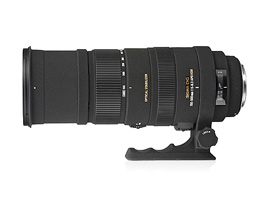
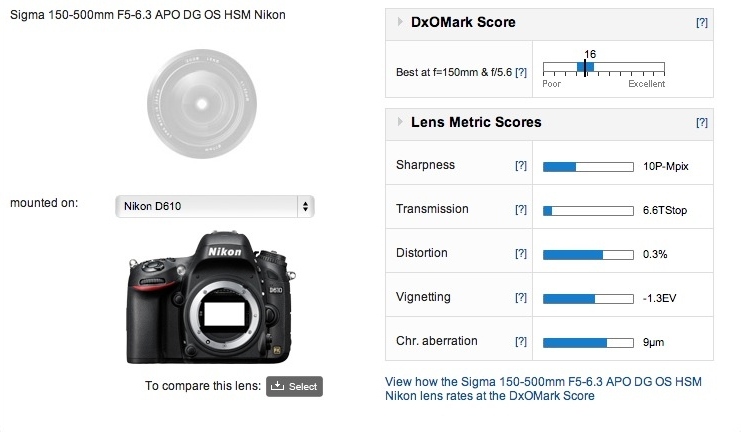
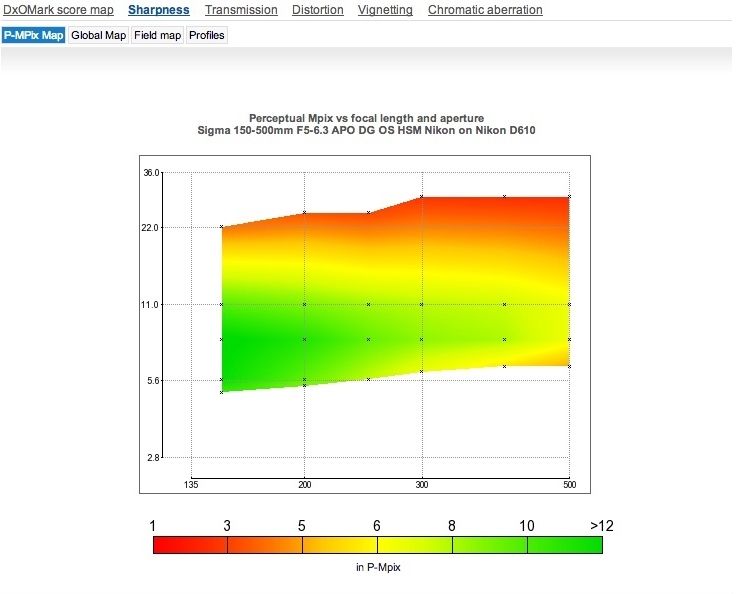


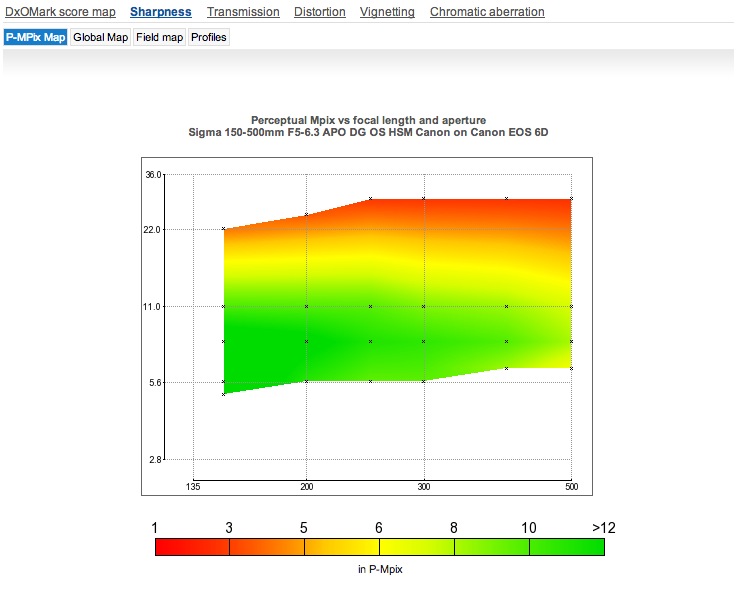


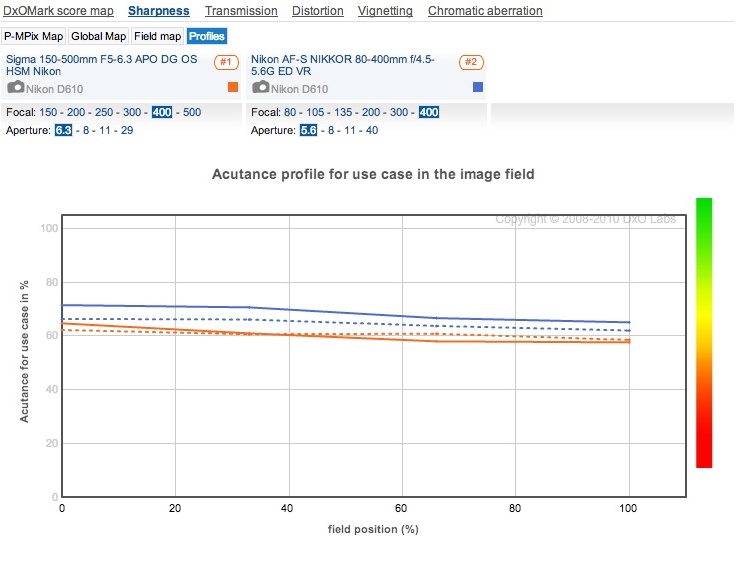
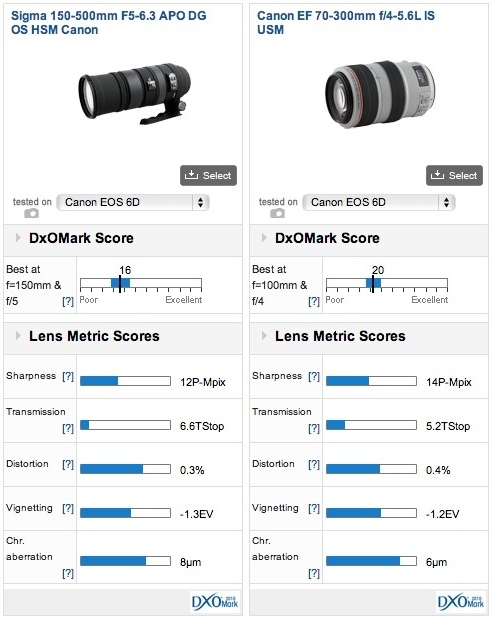
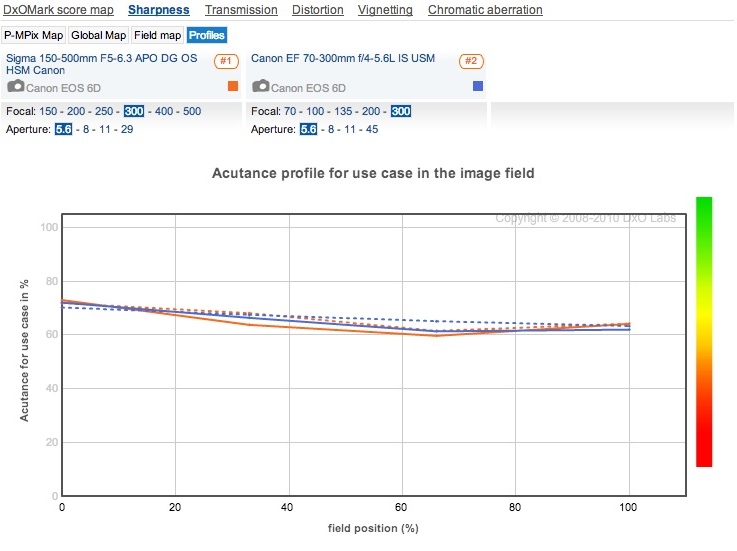
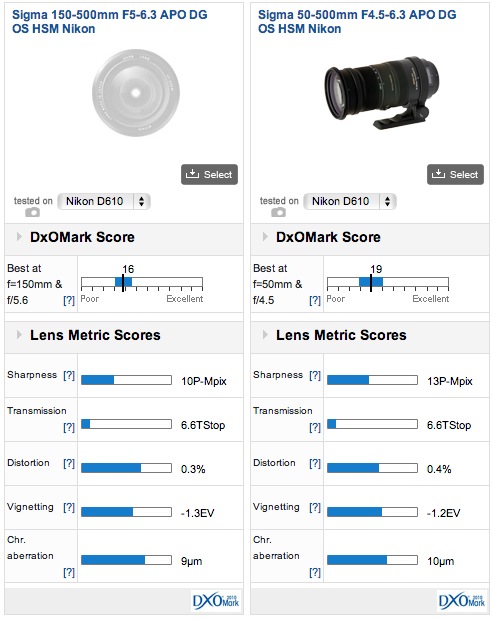
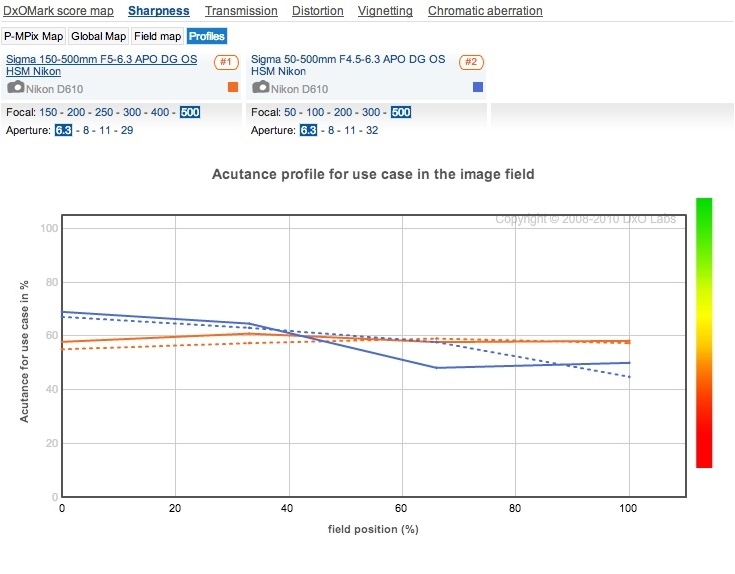
DXOMARK encourages its readers to share comments on the articles. To read or post comments, Disqus cookies are required. Change your Cookies Preferences and read more about our Comment Policy.